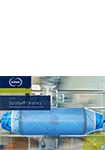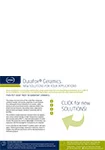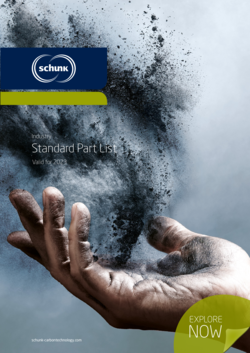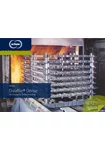Engineering competence in materials technology and machine building.
Foundry, molding, and sintering – with confidence
Benefit from our graphite and CFC materials that maintain dimensional stability even far above the melting temperatures of most metals. They show minimal thermal deformation and excellent thermal cycling resistance. These outstanding properties are achieved even with thin-walled components, resulting in significant weight savings that enhance hardness outcomes, speed up firing cycles, and increase the overall efficiency of your high-temperature furnaces.

Continuous Casting & Aluminum Casting Components
Advanced materials, smart solutions, and added value
High-quality semi-finished products made of non-ferrous metals and their alloys are often produced using the continuous casting process. Our continuous casting molds provide excellent thermal stability without reacting with the alloy. In aluminum melt refining, graphite rotors and shafts are commonly used. In sintering applications, CFC sintering plates and boxes offer substantial advantages over graphite – being both lighter and more stable. During hot pressing, our CFC materials are the ideal choice for applications that involve both high temperatures and mechanical pressure. All of our materials are non-contaminating to your products.
Durafox® – innovative protection against carburization
At temperatures above approx. 1,050 °C, steels react with carbon, forming eutectic compounds that lower the metal’s melting point. The result: potential contamination of the customer’s product due to material diffusion or even melting of components. Full ceramics or ceramic coatings are essential barriers between steel and carbon. Our oxide fiber composites (OFC) under the Durafox® Ceramics brand are known for their high damage tolerance and excellent thermal cycling resistance. Depending on the material variant, they can be used continuously at temperatures up to 1,300 °C. Unlike graphite and CFC, Durafox® does not oxidize, enabling its use under oxidizing conditions.
Durafire® – optimal performance after oil quenching
After oil quenching in heat treatment, charge carriers face significant stress. Conventional materials may suffer from cavitation and erosion due to bubbles forming in the oil. Oil also penetrates the open pores of the carriers, and subsequent processes like tempering, washing, and drying cannot completely remove the residual oil. During the next use, this oil vaporizes and causes soot formation. Durafire® Dense carriers are engineered specifically for these challenges. The result: a long-lasting material that ensures optimal post-treatment performance.


We take responsibility.

Innovative Solutions for Thermal Applications

Heat treatment with high-level know-how

New solutions for your applications

Standard parts list in the field of high temperature applications

The solution for oil quenching
Downloads
Let us advise you
Feel free to contact us with any questions about our thermal application offerings or if you require a customized solution.
